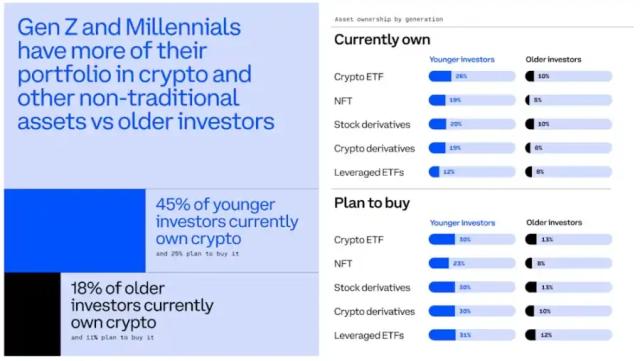Due to the rise in US Treasury yields and investors adjusting their expectations for the Federal Reserve's monetary policy, the US dollar index (DXY) hit a new high, and the cryptocurrency market has seen a second consecutive day of correction.
CMC data shows that over the past 24 hours, BTC briefly fell to an intraday low of $92,600, and as of the time of writing, it has rebounded to around $94,400, still down 2.1% over the past 24 hours, while Ethereum fell to around $3,330.

This trend is closely related to the strong economic data released in the US, including a surge in job openings and better-than-expected manufacturing performance. These data further reinforced the view of Federal Reserve Chairman Powell that aggressive rate cuts may not be necessary this year to effectively control inflation. "Fed mouthpiece" Nick Timiraos pointed out that the minutes of the Federal Reserve meeting released today further indicate that officials generally want to keep interest rates unchanged at the meeting at the end of this month. As a result, the market has adjusted its expectations for the Federal Reserve's future monetary policy, and risk assets have come under pressure and declined.
CoinGlass data shows that the two-day pullback has led to the liquidation of nearly $1 billion in cryptocurrency leveraged derivative positions, mainly long positions betting on an increase.
Macroeconomic and Policy Expectations Dominate Market Sentiment
This correction in the BTC price reflects the market's adjustment of its previous optimistic expectations for BTC. The previous optimism was mainly based on two assumptions: one is that the Federal Reserve will adopt a more accommodative monetary policy, i.e., actively cut interest rates; the other is that if Trump is re-elected as US president, it is expected to bring a clearer regulatory framework for the cryptocurrency industry. However, the current economic data and the Federal Reserve's stance have led the market to doubt the realization of the above two assumptions.
Philipp Pieper, co-founder of Swarm Markets, pointed out that in the absence of new market narratives to drive it, the cryptocurrency market is gradually returning to the logic of the traditional financial market. When interest rates are low, investors usually tend to increase their allocation to risky assets (such as cryptocurrencies and tech stocks) to seek higher returns. However, due to the continued uncertainty about the Trump administration's cryptocurrency policy, the market sentiment is relatively cautious, and this uncertainty is expected to last for some time.
The analysis report of 10x Research also emphasizes the importance of macroeconomic data to the BTC price. The report believes that the Federal Reserve's response to US economic data and the global liquidity situation are the two key macroeconomic factors affecting the trend of the BTC price. In the short term, the BTC price may enter a period of violent fluctuations in the "banana zone" due to these factors. The "banana zone" vividly describes the turbulent trend of asset prices under the joint action of macroeconomic factors.
Arthur Hayes, the founder of BitMEX, also analyzed the impact of US dollar liquidity on the BTC price in his latest blog post, arguing that BTC and cryptocurrency prices usually rise when US dollar liquidity increases.
Institutions Have Accumulated Over 34,000 BTC in the Past 30 Days
Although the market is facing short-term adjustment pressure, analysts remain optimistic about the long-term prospects of BTC. On-chain data from CryptoQuant shows that the "potential demand for BTC remains very strong" in the market. The institution measures market demand by comparing the relationship between the amount of idle BTC and the new BTC supply from miners. When the decrease in idle BTC far exceeds the new supply, it indicates strong market demand.
CryptoQuant analysts wrote that around December 21, 2024, institutional investors had sold about 79,000 BTC in a week, leading to a 15% market correction. However, large institutions subsequently used the market consolidation period to continuously buy below $9,500 using a time-weighted average price (TWAP) strategy. Over the past 30 days, institutional investors have accumulated more than 34,000 BTC, providing buying support for the recent rebound in BTC.

Although there have been adjustments in institutional portfolios, the trend of on-chain BTC accumulation has remained clear since June 2023. This indicates that despite retail demand being at a five-year low, institutional interest in BTC remains high.
CryptoQuant's analysis also shows that the BTC correction has significantly reduced traders' unrealized profits, which is a normal phenomenon after a significant rise. Currently, traders' realized price is around $88,000 (usually providing price support in a bull market).
Historical data shows that in January following the past two US presidential elections, BTC has experienced corrections, with declines of 36% in January 2017 and January 2021.

Jamie Coutts, chief crypto analyst at Real Vision, commented on the X platform: "With the US dollar strengthening becoming a real issue, I had expected BTC to be around $80,000 by now, but it hasn't dropped that much, which shows the strength of the underlying bid and the market's expectation that the Fed will have to act; otherwise, things will start to deteriorate. Regardless of how events unfold, more liquidity is on the way, and BTC should be much higher in 6 months."
In summary, the recent BTC correction is mainly influenced by macroeconomic data and changes in expectations for Federal Reserve policy. In the short term, the market may still maintain a volatile pattern. However, the continued accumulation by institutional investors and the strong demand reflected in on-chain data will provide support for the long-term trend.
Welcome to join the official BlockBeats community:
Telegram subscription group: https://t.me/theblockbeats
Telegram discussion group: https://t.me/BlockBeats_App
Twitter official account: https://twitter.com/BlockBeatsAsia








